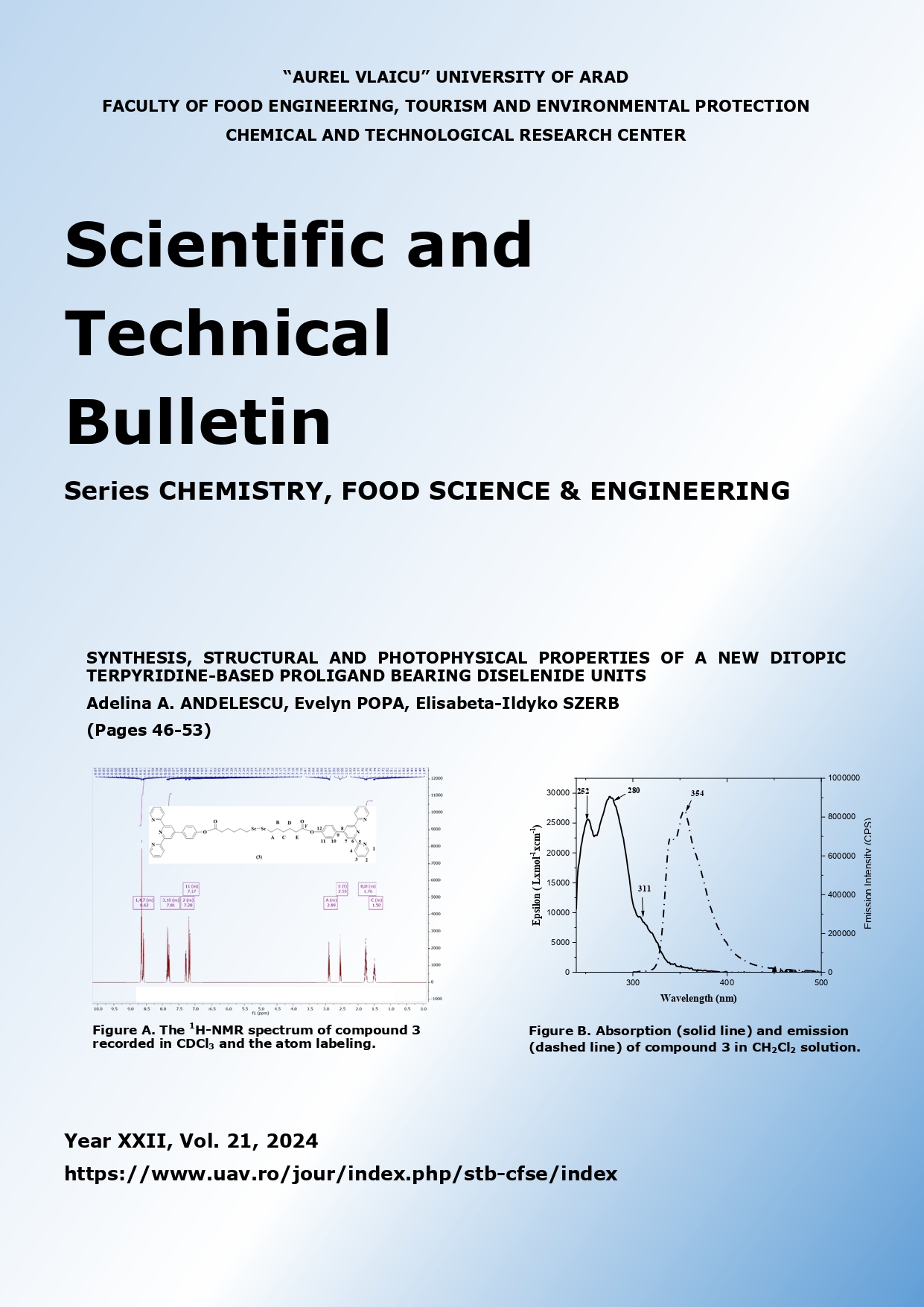BIOSYNTHESIZED GOLD NANOPARTICLES FROM HEDERA HELIX BIOMASS WASTE
Keywords:
antimicrobial activity, gold nanoparticles, green synthesis, Hedera helix, phytochemical characterizationAbstract
Hedera helix is an evergreen perennial vine plant often pruned for ornamental or ecological purposes.
This process generates a significant amount of biomass waste. Therefore, this study aimed to use this biomass to obtain
extracts rich in phenolic compounds and as a mediator for the biosynthesis of gold nanoparticles (AuNPs). Biochemical
assays (DPPH, FRAP, Folin–Ciocalteu, and colorimetric determination of total flavonoid content) revealed that the
extracts have significant radical scavenging activity and moderate phenolic and flavonoid compound levels. These
findings were further supported by UHPLC analysis, providing insight into the chemical composition of these extracts.
Only the most efficient extract (water infusion) was further used for AuNPs synthesis in three different synthesis
medium concentrations of HAuCl4 (0.5, 1, and 2 mM). Visual and UV-Vis spectroscopy analyses revealed the successful
formation of AuNPs, while SEM-EDS analysis confirmed the morphology (spherical and polydisperse nanoparticles)
and elemental composition. The antimicrobial activity was evaluated through the broth microdilution method against
five microbial strains (Staphylococcus aureus, Escherichia coli, Salmonella typhimurium, Pseudomonas aeruginosa,
and Candida albicans) and two antibiotics (penicillin and gentamicin). The resulting bacterial inhibition rate (BIR%)
revealed a low inhibitory activity for AuNPs, significantly lower than for the tested antibiotics. It suggests that further
AuNPs functionalizations may be required to increase their biological activity
Downloads
Published
Issue
Section
License
Please send the manuscript prepared with the MSWord Template, together with the Cover Letter to the editor-in-chief:
Dana Copolovici (e-mail: dana.copolovici@uav.ro)







